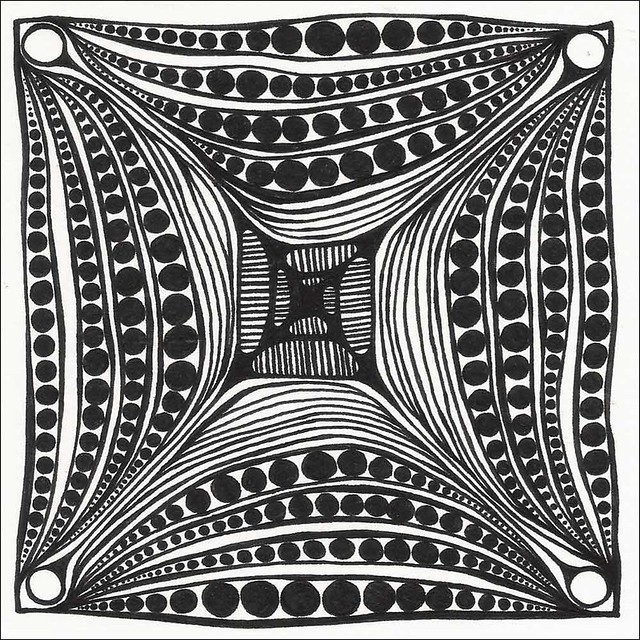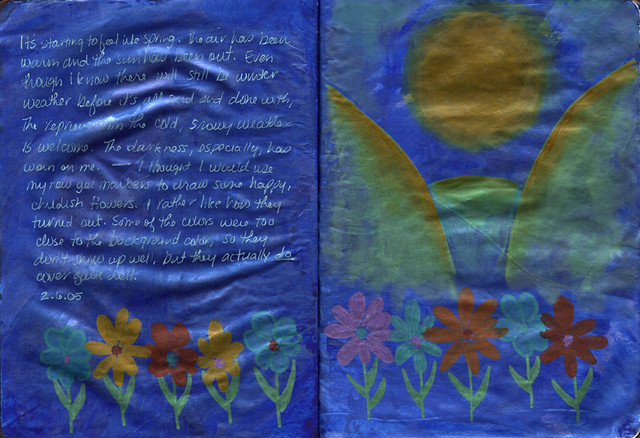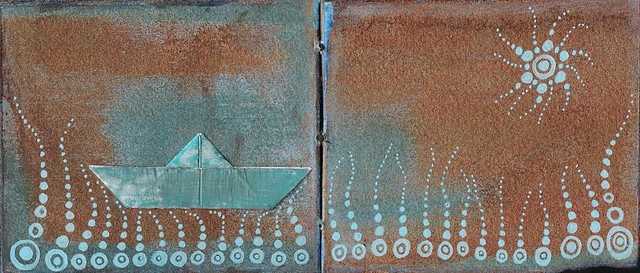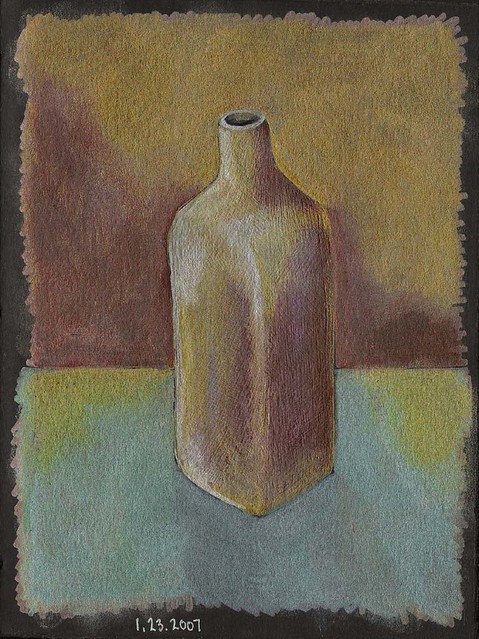The subject of pens comes up frequently on many of my art and journalling lists. I thought I’d take some time to collect my thoughts on the tools I like to use, as well as those I’ve found to be problematic. My basic philosophy is that it’s usually best to use archival inks. However, there are situations in which the other materials are so unarchival that the longevity of the inks used is irrelevant. And then there are the solvent-based inks found in permanent markers, like Sharpies, that are so caustic and volatile that I do not use them, period.
Faber-Castell Pitt Pens: These come in a variety of colors and felt tip sizes, as well as brush tip. They contain India ink, so they are permanent and archival.
They can, however, be blended by working dark-to-light and using the next lightest pen to “melt” the carrier in the previous layer. You can either use the lighter pen to blend the darker ink. If you work on a non-porous surface, you have enough dry time to blend the ink with your fingers. (below)

Faber-Castell Pitt Pen on acrylic in composition book journal
Zebra Sarasa Retractable Gel Pens: I love these pens. Unlike some of the cheaper gel pens, which are hit-and-miss, these have yet to fail on me. They are archival and come in a variety of nice, rich colors. The line quality is good, with minimal skipping, even when used over acrylic paint. You also don’t have to worry about lost caps, which is nice, as I’m a cap loser. (below)

Zebra Sarasa retractable gel pen on 140lb Cartiera Magnani hotpress watercolor paper 4 3/4 x 4 3/4 inches
Zig Millennium Pigment Markers: This pen has a felt tip and archival, pigment-based ink. It writes nicely on a variety of surfaces, indluding thinly applied Neocolors II Watersoluble Crayons, acrylic paint, and transparencies.
Zig Ball Archival: I love this pen as an all-around work horse. It has a .5mm roller ball tip and archival, pigment-based ink. It writes well on a variety of surfaces with a minimum of skipping. It is also one of the few art pens that can keep up with the speed of my writing.
RoseArt Metallic Bright Markers: These are not archival, but they’re fun to play with. The markers are fat, with a blunt tip. They’re available in the office supply section of most department stores. They contain opaque, metallic gel ink, and write on just about anything, including metal and plastic.
If you work quickly, you can blend the ink with fingers or baby wipes. (below)

RoseArt Metallic Bright Markers in composition book journal
RoseArt Color Sharp Metallics: These contain the same opaque, metallic ink as the Brights, but they have dual thick-and-thin tips and come in slightly different colors. (below)
Dip Pens and India Ink: I adore my dip pen. For long periods of writing, there is nothing I’ve found that can compare to it for comfort. When used with India ink, it is archival and permanent and can be used on a variety of surfaces. This is by far my favorite pen for journaling. (below)

collage with Portfolio watersoluble crayon and dip pen with India ink in composition book
Cheap-o Gel Pens: You can often pick up gel pens for ultra-cheap at dollar stores and department stores. I wouldn’t assume they are archival, but they can be fun toys for journaling. Keep in mind that they do not contain much ink. The failure rate is pretty high, too. I’d guess that in any package of cheap gel pens, I’ve found that about half of them were duds. Of the half that were decent, only half of those were “keepers.” (below)

collage, gel pen, and acrylic on 140lb Cartiera Magnani hot press watercolor paper
Sharpie Permanent Markers: I am not a fan of Sharpies, or of any other permanent, solvent-based markers. Aside from the noxious smell, the inks are not stable.
You can see above that the ink has migrated and created halos. It’s also burned the paper, turning it brown. This example is about 10 years old, but the ink began to deteriorate within just a couple of years of its creation. I’m not a stickler for always using archival materials in my journals, because I think the process of journaling is more important than getting hung up on longevity. However, I’d like my journals to last through my lifetime, fairly well intact. This sort of degradation is not acceptable to me.


